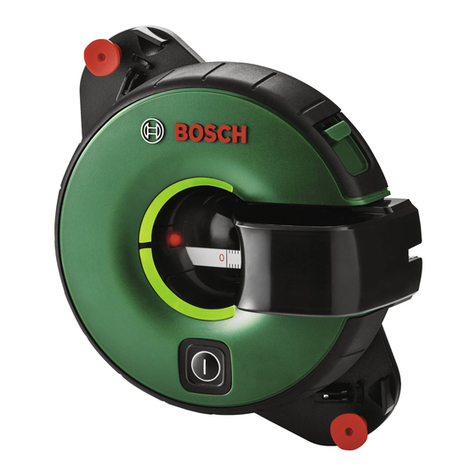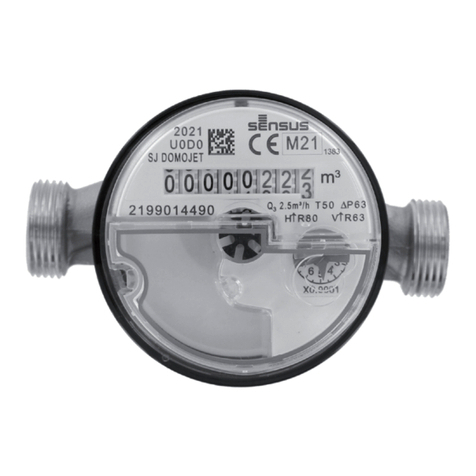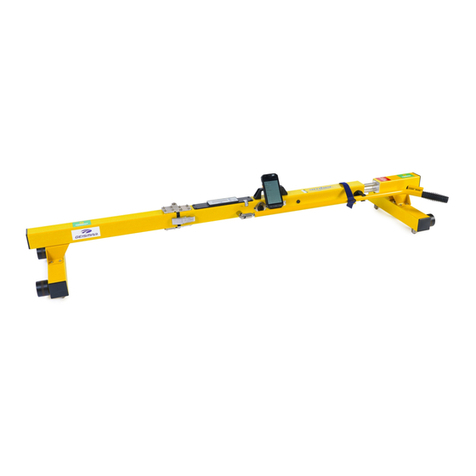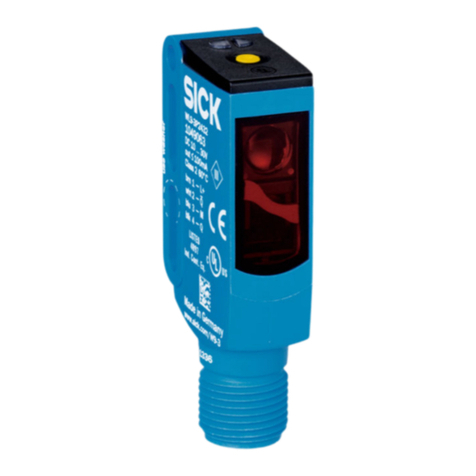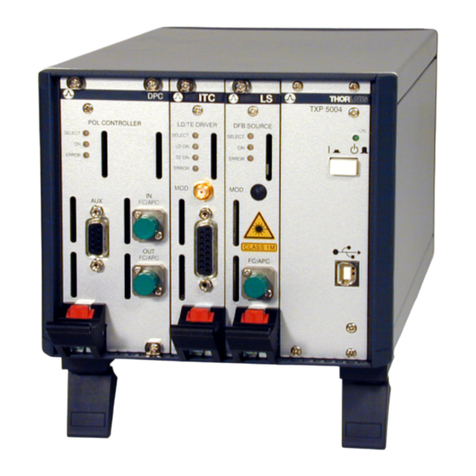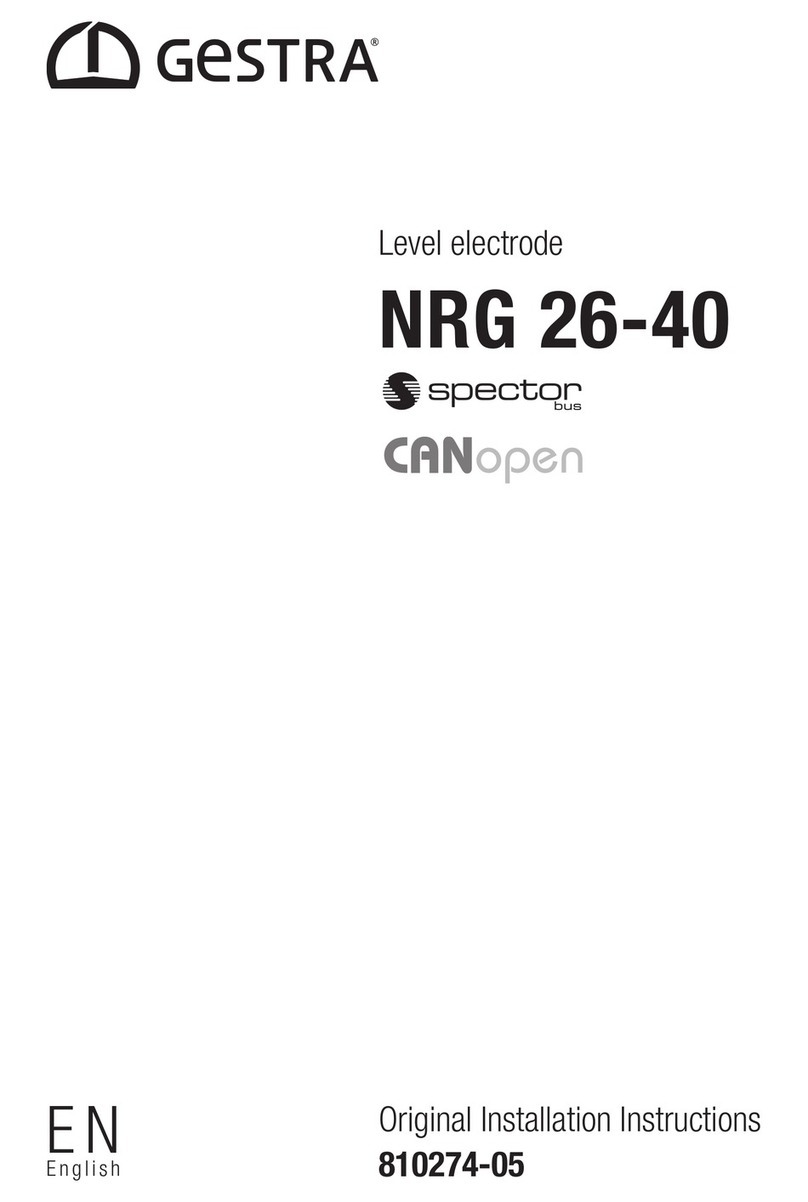INNALABS AI-Q-2010 User manual

AI-Q-20X0 Accelerometers User Manual
IN-IR-MPD-72-256
Rev 1.0
22/09/2015
Page 1of 31 INNALABS PROPRIETARY INFORMATION
www.innalabs.com
Quartz Accelerometer
AI-Q-2010
AI-Q-2020
AI-Q-2030
USER MANUAL
Revision 1.0

AI-Q-20X0 Accelerometers User Manual
IN-IR-MPD-72-256
Rev 1.0
22/09/2015
Page 2of 31 INNALABS PROPRIETARY INFORMATION
www.innalabs.com
PROPRIETARY NOTE
The information contained within this user manual (the
“Documentation”) is proprietary to InnaLabs, and is intended solely
for the use of InnaLabs customers, in the design or development of
systems whose purpose is to operate using InnaLabs inertial sensors.
You may not reproduce, distribute, republish, download, display,
post, or transmit this Documentation in any form or by any means
including, but not limited to, electronic, mechanical, photocopying,
recording, or otherwise, without the prior written consent of
InnaLabs.
InnaLabs disclaims any liability arising out of use of this
Documentation.
This Documentation is disclosed as seen with no warranties other
than that defined in Appendix A.
© 2015 InnaLabs Ltd. All rights reserved.
INNALABS is a trademark of InnaLabs Ltd.

AI-Q-20X0 Accelerometers User Manual
IN-IR-MPD-72-256
Rev 1.0
22/09/2015
Page 3of 31 INNALABS PROPRIETARY INFORMATION
www.innalabs.com
This user manual supports the following INNALABS accelerometer part numbers:
AI-Q-2010
AI-Q-2020
AI-Q-2030
Quartz Pendulous Accelerometers
Technical and performance specifications, interface data and mounting guidelines are
included.
Throughout this document, AI-Q-20X0 refers collectively to the 3 different part numbers AI-
Q-2010, AI-Q-2020, and AI-Q-2030.

AI-Q-20X0 Accelerometers User Manual
IN-IR-MPD-72-256
Rev 1.0
22/09/2015
Page 4of 31 INNALABS PROPRIETARY INFORMATION
www.innalabs.com
TABLE OF CONTENTS
1. INTRODUCTION ........................................................................................................................ 6
1.1 Reference documents...........................................................................................................................6
1.2 Abbreviations .......................................................................................................................................6
1.3 Product description ..............................................................................................................................6
1.4 Product Performance ...........................................................................................................................7
1.5 Technology description ........................................................................................................................8
2. INTERFACES .............................................................................................................................10
2.1 Interface Control Drawing ..................................................................................................................10
2.2 Electrical Interface and Wiring ...........................................................................................................10
2.3 Mass...................................................................................................................................................14
2.4 Mounting ...........................................................................................................................................15
2.5 Preliminary Testing ............................................................................................................................15
2.6 Electrical characteristics .....................................................................................................................17
3. FUNCTIONAL CHARACTERISTICS ..................................................................................... 18
3.1 General comment...............................................................................................................................18
3.2 Handling Requirements ......................................................................................................................18
3.3 Error model ........................................................................................................................................19
3.4 Start-up time ......................................................................................................................................19
3.5 Warm-up time....................................................................................................................................20
3.6 Input Acceleration and input Acceleration Limits ...............................................................................20
3.7 Scale factor.........................................................................................................................................20
3.8 Bias ....................................................................................................................................................21
3.9 Frequency response and bandwidth...................................................................................................22
3.10 Vibration Sensitivity ...........................................................................................................................23

AI-Q-20X0 Accelerometers User Manual
IN-IR-MPD-72-256
Rev 1.0
22/09/2015
Page 5of 31 INNALABS PROPRIETARY INFORMATION
www.innalabs.com
3.11 Misalignment .....................................................................................................................................23
4. ENVIRONMENTAL CONDITIONS ........................................................................................ 24
4.1 Operating temperature ......................................................................................................................24
4.2 Non-Operating temperature ..............................................................................................................24
4.3 Humidity ............................................................................................................................................24
4.4 Mechanical environment....................................................................................................................24
4.5 EMI - EMC...........................................................................................................................................26
5. PRODUCT MARKING..............................................................................................................26
6. PACKAGING AND TRANSPORT...........................................................................................27
7. ACCEPTANCE TEST ................................................................................................................27
8. ACCEPTANCE TEST CERTIFICATE.....................................................................................29
9. TECHNICAL SUPPORT ...........................................................................................................29
APPENDIX A –LIMITED WARRANTY ON HARDWARE ......................................................30

AI-Q-20X0 Accelerometers User Manual
IN-IR-MPD-72-256
Rev 1.0
22/09/2015
Page 6of 31 INNALABS PROPRIETARY INFORMATION
www.innalabs.com
1. INTRODUCTION
1.1 RE F E RE N C E D O C U ME N T S
[RD1] IEEE Std 1293-1998 R2008, IEEE Standard Specification Format Guide and Test
Procedure for Linear, Single-Axis, Nongyroscopic Accelerometers
[RD2] IN-IR-DWG-0447-02, AI-Q-20X0 Accelerometer Interface Control Document,
revision 2, 27/04/2015
1.2 AB B RE V I A T I ON S
°C
Degrees Celsius
ATC
Acceptance Test Certificate
dB
Decibels
EMC/EMI
Electromagnetic Compatibility, Electromagnetic Interference
g
Acceleration due to gravity
GND
Ground
Hz
Hertz
ICD
Interface Control Document
K
Kelvin
mA
Milliamps
mrad
Milliradians
MTBF
Mean Time Between Failures
mV
Millivolts
mW
Milliwatts
N/A
Not Applicable
Ppm
Parts Per Million
PSD
Power Spectral Density
rad
Radians
RMS
Root Mean Square
s
Second
T
Temperature
V
Volts
VDC
Volts Direct Current
W
Watts
1.3 PR O D U CT D E S C R I PT I O N
The AI-Q-20X0 is a family of single axis, closed loop quartz pendulous accelerometers. These
accelerometers offer navigation grade performance with exceptional repeatability and
reliability, making it the ideal choice for demanding navigation systems. Each accelerometer
is provided with thermal compensation models for bias, scale factor and misalignment (up
to 4th order), and is focussed on fulfilling the operational requirements of inertial systems
which require navigation grade performance, low output noise, large bandwidth, small size,
low weight and high reliability.

AI-Q-20X0 Accelerometers User Manual
IN-IR-MPD-72-256
Rev 1.0
22/09/2015
Page 7of 31 INNALABS PROPRIETARY INFORMATION
www.innalabs.com
The accelerometer is ready for use within 100 milliseconds of power-on (typically 20 ms)
and provides an analogue current output proportional to applied acceleration along the
reference axes (up to ±60 g).
1.4 PR OD U C T PE R F O R M A N C E
Parameters
Units
AI-Q-2010
AI-Q-2020
AI-Q-2030
Input Range
g
±60
±60
±60
Bias
mg
<4
<4
<4
One-year Composite Repeatability (3)
μg
<550
<220
<160
Temperature Sensitivity
µg/°C
<30
<30
<30
Scale Factor
mA/g
1.2 to 1.46
1.2 to 1.46
1.2 to 1.46
One-year Composite Repeatability (3)
ppm
<600
<500
<310
Temperature Sensitivity
ppm/°C
<180
<180
<180
Axis Misalignment
µrad
<2000
<2000
<2000
One-year Composite Repeatability (3)
µrad
<100
<100
<100
Vibration Rectification
μg/g2RMS
<40 (50-500 Hz)
<150 (500-2000 Hz)
<40 (50-500 Hz)
<60 (500-2000 Hz)
<20 (50-500 Hz)
<60 (500-2000 Hz)
Intrinsic Noise
μgRMS
<7 (0-10 Hz)
<70 (10-500 Hz)
<1500 (500-10 kHz)
<7 (0-10 Hz)
<70 (10-500 Hz)
<1500 (500-10000 Hz)
<7 (0-10 Hz)
<70 (10-500 Hz)
<1500 (500-10000 Hz)
Operating Temperature
°C
-55 to +95
-55 to +95
-55 to +95
Shock
g
250
250
250
Vibration Peak Sine
g, Hz
15g @ 20 to 2000 Hz
15g @ 20 to 2000 Hz
15g @ 20 to 2000 Hz
Resolution/Threshold
μg
<1
<1
<1
Bandwidth
Hz
>300
>300
>300
Temperature Model
Yes
Yes
Yes
Quiescent Current per Supply
mA
<16
<16
<16
Quiescent Power @ ±15VDC
mW
<480
<480
<480
Electrical interface
Temp Sensor
Temp Sensor
Temp Sensor
Voltage Self-Test
Voltage Self Test
Voltage Self Test
Current Self-Test
Current Self Test
Current Self Test
Power/Signal Ground
Power/Signal Ground
Power/Signal Ground
-10 VDC Output
-10 VDC Output
-10 VDC Output
+10 VDC Output
+10 VDC Output
+10 VDC Output
Input Voltage
VDC
±13 to ±28
±13 to ±28
±13 to ±28
Weight
g
71 ±4
71 ±4
71 ±4
Diameter below mounting surface
mm
25.45 Max
Ø 25.45 Max
Ø 25.45 Max
Height –bottom to mounting surface
mm
14.85 Max
14.85 Max
14.85 Max
Case Material
300 Series Stainless
Steel
300 Series Stainless
Steel
300 Series Stainless
Steel

AI-Q-20X0 Accelerometers User Manual
IN-IR-MPD-72-256
Rev 1.0
22/09/2015
Page 8of 31 INNALABS PROPRIETARY INFORMATION
www.innalabs.com
1.5 TE C H N OL O G Y D E S C R I PT I O N
The core of the proof (or seismic) mass of InnaLabs® pendulous accelerometers is a high
purity fused quartz disc structure connected to a rigid outer frame by two thin hinges
(Figure 1). The overall structure is monolithic and a deposited gold film is used to form an
electrode pattern onto the surface of the pendulum as required for capacitive detection and
for connection to the torque conducting leads
Figure 1 –Pendulum
Figure 2 –Accelerometer
Each accelerometer (Figure 2) includes a central ‘cell’, which contains the pendulum and
electrostatic and electromagnetic circuit components used as parts of the closed loop
control system.
When acceleration is applied perpendicularly to the proof mass, the servo loop circuit
derives an error signal from the capacitive detection and delivers a current into two coils
attached symmetrically to each side of the proof mass. Laplace forces are then applied to
the winding and therefore the proof mass will be maintained in a capture or null mode with
its centre in a null position, over a broad frequency band of input accelerations (i.e. >2 kHz
typical). As the current through the coils is proportional to the applied acceleration, the
same current flowing through an external load resistor will then generate an output voltage
proportional to acceleration.
Figure 3 shows a simplified diagram of the closed loop system.

AI-Q-20X0 Accelerometers User Manual
IN-IR-MPD-72-256
Rev 1.0
22/09/2015
Page 9of 31 INNALABS PROPRIETARY INFORMATION
www.innalabs.com
N
S
Pendulum
N
S
Capacitive Plate
(Lower Case)
Current
Amplifier
&
PID Control
Servo
Amplifier
-
+
Feedback
Compensation
Signal Out
Pin 1
Current Torque
Pin 2
Self Test
Pin 7
Torque
Motor
Coils
Capacitive Plate
(Upper Case)
Magnet
(Upper Case)
Magnet
(Lower Case)
Torque Motor Coil
(Upper Case)
Torque Motor Coil
(Lower Case)
Detector
Lower
Case
Temperature Output
Pin 6
Power Supply
Negative Power Supply
Pin 3
Positive Power Supply
Pin 4
Ground
Pin 8
-9V
Pin 9
+9V
Pin 10
GND
VIN-
VIN+
–VREF
+ VREF
Upper
Case
Note: The mechanical
(chassis) ground is isolated
from the electrical ground
(pin 8)
Figure 3 –System Block Diagram
The current required in the torque motor coils to re-centre the pendulum is directly
proportional to the applied acceleration. This current is output on the Signal Out pin as the
acceleration signal. Typically, a precision resistor is used externally to the accelerometer to
convert the current output to a voltage.

AI-Q-20X0 Accelerometers User Manual
IN-IR-MPD-72-256
Rev 1.0
22/09/2015
Page 10 of 31 INNALABS PROPRIETARY INFORMATION
www.innalabs.com
The definition of the accelerometer axes, as described in annex 3 of [RD1], are shown in
Figure 4.
Input Axis
(IA)
Hinge Axis
(OA)
Pendulum Axis
(PA)
Figure 4 –AI-Q-20X0 Axes
The axes are:
Input Axis (IA)
–
The sensitive axis of the accelerometer
Pendulous Axis (PA)
–
The axis normal to the plane of the pendulum
Output (Hinge) Axis (OA)
–
The axis parallel to the line through the hinge of the pendulum
The positive direction of OA is defined by the vector operation:
Note: For more information about the technology or physical principles see [RD1] , Annex C,
pp. 110-117:
2. INTERFACES
2.1 IN TE R F AC E CO N T R O L DR A W I N G
The reference document [RD2] provides all necessary information about the AI-Q-20X0
mechanical interfaces.
2.2 EL EC T R I C AL IN T E R F A CE A ND WI R I N G
The AI-Q-20X0 has ten connection pins, as shown in Figure 5, below.

AI-Q-20X0 Accelerometers User Manual
IN-IR-MPD-72-256
Rev 1.0
22/09/2015
Page 11 of 31 INNALABS PROPRIETARY INFORMATION
www.innalabs.com
Figure 5 –AI-Q-20X0 Pins
The assignment of pins on the AI-Q-20X0 is shown in the following table:
Pin
Function
Type
Characteristics
1
Signal Out
Analogue
Acceleration output, current signal, section 2.2.1
2
Current Torque
Analogue
Current input test pin, section 2.2.5
3
Negative Power Supply
Power
-13 V to -28 V, section 2.2.4
4
Positive Power Supply
Power
+13 V to +28 V, section 2.2.4
5
Not Connected
N/A
Do not connect to this pin.
6
Temperature Sensor Output
Analogue
Temperature output, current signal, section 2.2.3
7
Voltage Self-Test
Analogue
Voltage input test pin, section 2.2.5
8
Signal & Power Return
Ground
Ground reference for power supplies and signals
9
-10 V DC
Analogue
Voltage output, section 2.2.5
10
+10 V DC
Analogue
Voltage output, section 2.2.5
2.2.1 Electrical Connection
The diagram in Figure 6 shows the connections to the accelerometer for normal operation.

AI-Q-20X0 Accelerometers User Manual
IN-IR-MPD-72-256
Rev 1.0
22/09/2015
Page 12 of 31 INNALABS PROPRIETARY INFORMATION
www.innalabs.com
Power Supply
+VIN -VIN GND
RMEAS
RTEMP
UTEMP
UMEAS
1
2
3
4
5
6
78
Figure 6 –AI-Q-20X0 Measurement Connections
2.2.2 Acceleration Measurement
The AI-Q-20X0 accelerometer produces an output current proportional to the acceleration
applied along the sensitive axis of the accelerometer.
The output of the accelerometer is typically connected to a load resistor, RMEAS, which
provides a voltage output, UMEAS. The nominal output is:
2.2.3 Temperature Measurement
The AI-Q-20X0 internal temperature sensor produces an output current proportional to
absolute temperature. The device acts as a high impedance, constant current regulator
passing 1 µA/°C. The temperature sensor is calibrated to output 303.2 µA at 30 °C (303.2 K).
Parameters of the internal temperature sensor are shown in the table below.
Parameters
Units
Values
Typical
Maximum
Nominal Current Output at 30 °C
µA
303.2
Nominal Temperature Coefficient
µA/°C
1
Calibration Error @ 30 °
°C
±5.0
Nonlinearity#1
°C
±1.5
Repeatability
°C
±0.1

AI-Q-20X0 Accelerometers User Manual
IN-IR-MPD-72-256
Rev 1.0
22/09/2015
Page 13 of 31 INNALABS PROPRIETARY INFORMATION
www.innalabs.com
Parameters
Units
Values
Long-Term Drift
°C
±0.1
Current Noise
pA/√Hz
40
Effective Shunt Capacitance
pF
100
Electrical Turn-On Time
µs
20
Note #1: Nonlinearity is defined as the deviation of current over temperature from a best-fit straight line.
The output of the temperature sensor is typically connected to a load resistor RTEMP, which
provides a voltage output, UTEMP. The nominal output at a given temperature is:
2.2.4 Power Supplies
The AI-Q-20X0 requires a bipolar power supply in the range ±13 V to ±28 V. It is not
necessary for the two supplies to be of equal magnitude. The quiescent current
consumption will increase at higher input voltages.
The AI-Q-20X0 has a ripple rejection characteristic as shown in Figure 7 (for an RMEAS value of
1 kΩ). The ripple rejection is presented in dB(mA/V), as the acceleration sensitivity depends
on the scale factor.
Figure 7 –AI-Q-20X0 Ripple Rejection Characteristics
2.2.5 Test Functionality
The AI-Q-20X0 has three options for test functionality: the current torque connection (pin
2), the voltage self-test connection (pin 7) and the voltage output pins (pins 9 and 10).
0
10
20
30
40
50
60
70
80
90
100
110 100 1000 10000 100000
PSRR [dB(ma/V)]
Frequency [Hz]
Positive Rail Negative Rail

AI-Q-20X0 Accelerometers User Manual
IN-IR-MPD-72-256
Rev 1.0
22/09/2015
Page 14 of 31 INNALABS PROPRIETARY INFORMATION
www.innalabs.com
2.2.5.1 Current Torque
The current torque pin (2) is a current input pin. Current on this pin is injected into the
output of the servo amplifier, as shown in Figure 3. The servo loop acts to null the injected
current, increasing current draw on the appropriate power pin (a positive input current
increases current draw on the negative supply and vice versa):
PositiveCurrentonPin2=NegativeCurrentonPin3
NegativeCurrentonPin2=PositiveCurrentonPin4
This functionality can be used to verify that the electronics in the accelerometer can deliver
the current required under high g conditions (static and/or dynamic). Based on the scale
factor of the accelerometer:
In normal operation, this pin should be left unconnected.
2.2.5.2 Voltage Self-Test
The voltage self-test pin (7) is a voltage input pin. A voltage applied to this pin injects a
signal into the integrator of the control loop electronics, as shown in Figure 3. As the
integrator input is offset (assuming a DC input), the servo loop compensates the input,
offsetting the position of the pendulum, and is visible as a transient on the accelerometer
output. A step input to this test pin can be used to measure the accelerometer bandwidth
from the transient response.
In normal operation, this pin should be left unconnected.
2.2.5.3 Voltage Output Pins
Pins 9 and 10 of the accelerometer are used to check the correct operation of the AI-Q-20X0
internal electronics. In normal operation, the output of these pins can be measured:
Pin9Output=10VDC
Pin10Output=+10VDC
In normal operation, these pins should be left unconnected, as loading these pins can affect
the operation of the accelerometer.
2.3 MA S S
The mass of the AI-Q-20X0 accelerometers is 71 g ±4 g.

AI-Q-20X0 Accelerometers User Manual
IN-IR-MPD-72-256
Rev 1.0
22/09/2015
Page 15 of 31 INNALABS PROPRIETARY INFORMATION
www.innalabs.com
2.4 MO U N TI N G
The external mounting holes for the AI-Q-20X0 are shown in Figure 8 (see [RD2] for full
details). The mounting holes are designed for metric M3 screws with a tightening torque of
20 –40 cNm.
Figure 8 –AI-Q-20X0 Mounting Holes
N.B.: For optimum thermal misalignment performance, it is recommended the accelerometer be
mounted to a 300 series stainless steel base
The recommended material for screws is stainless steel, in order to match the thermal
expansion rate of the accelerometer housing.
During mounting, if a torque wrench is used, it is recommended to maintain it not triggered,
in order to avoid propagating shocks into the accelerometer.
2.5 PR E L IM I N A R Y TE S T I N G
Before connecting and mounting the AI-Q-20X0, a simple familiarisation test is suggested if
this is the User’s first introduction to the product. This test will also verify proper unit
operation and assist in troubleshooting.
2.5.1 Equipment needed to Test
±(13 –28) VDC power supply limited to 20 mA
Load resistor (RMEAS), up to 10 kΩ
A voltmeter / oscilloscope
2.5.2 Test Procedure
Place the AI-Q-20X0 on a flat surface with the connector pins facing up.

AI-Q-20X0 Accelerometers User Manual
IN-IR-MPD-72-256
Rev 1.0
22/09/2015
Page 16 of 31 INNALABS PROPRIETARY INFORMATION
www.innalabs.com
Connect the power supply according to §2.2 (positive supply to pin 4 and negative
supply to pin 3, ground to pin 8).
Connect the load resistor between the Signal Out (pin 1) and Signal Return (pin 8).
Connect the voltmeter / oscilloscope across pins 1 (Signal Out) and 8 (Signal/Power
Return) of the AI-Q-20X0 interface connector to test
Wires can be connected to the accelerometer using a test connector (InnaLabs can provide
these connectors on request), or by soldering wires directly to the pins. If soldered
connections are used, this should be done as per the state of the art, in such a way as to
avoid short circuits between pins.
Figure 9 –Electrical Connection to AI-Q-20X0
2.5.2.1 ±1 g Tumble Test
Switch on the power supply
Observe the output of the accelerometer on the voltmeter / oscilloscope.
oThe output should show the equivalent of +1 g, according to the following
equation (from Figure 6):
Acceleration = (UMEAS / RMEAS) / Scale Factor
Rotate the accelerometer through 180°, so that the connector pins are now facing
down.
oThe output should now show the equivalent of -1 g.
Switch off the power supply.
Figure 10 and Figure 11 show the orientations for ±1 g measurements.

AI-Q-20X0 Accelerometers User Manual
IN-IR-MPD-72-256
Rev 1.0
22/09/2015
Page 17 of 31 INNALABS PROPRIETARY INFORMATION
www.innalabs.com
Figure 10 –+1 g Orientation
Figure 11 –-1 g Orientation
2.6 EL EC T R I C AL C H A RA C TE R I S T I C S
2.6.1 Load Resistor Selection
The external resistor used affects the maximum g-range measurable by the test system, due
to voltage drop across both it and the internal coil resistance.
Where:
VIN: Absolute Power Supply Voltage
K1: Scale Factor (from ATC)
RL: Coil Resistance (from ATC)
RMEAS: Measurement Resistance
For example:
VIN = ±13 V
K1= 1.20 mA/g
RL= 170 Ω
RMEAS = 10 Ω
The acceleration range (at which point the accelerometer output saturates) using the
parameters above is ±60.2 g. As the input voltage is increased, a larger voltage drop is
available, enabling the same acceleration level to be measured with a larger measurement
resistor (thus improving signal-to-noise ratio). Using the same formula with a 215 Ω
measurement resistor, at ±28 V, the saturation range is ±60.6 g.
With a scale factor of 1.46 mA/V, a 147 Ω (or less) resistor is required at ±28 V in order to
meet the full measurement range.
The absolute acceleration limit over temperature is dependent on the range of the
parameters in the equation above.

AI-Q-20X0 Accelerometers User Manual
IN-IR-MPD-72-256
Rev 1.0
22/09/2015
Page 18 of 31 INNALABS PROPRIETARY INFORMATION
www.innalabs.com
This can be re-written as:
When selecting a load resistor, the resistance of any associated interconnecting cables must
be taken into account as these add to the overall resistance. As such, the maximum cable
length depends on the voltage drop that can be tolerated.
It is recommended the resistance (and by association the length) of the cable is kept to a
minimum in order to minimise variations in the measured output due to resistance changes
over temperature.
3. FUN CT ION AL C HA RA CT ER I ST I CS
3.1 GE N E RA L C O M M EN T
When not specified, the performance detailed below is available over the full operating
conditions as described in section 4.
3.2 HA N D L IN G RE Q U I R E ME N T S
Preventing ESD Damage
An unpackaged AI-Q-20X0 is to only be handled, stored or transported in an ESD
protected area [EPA]
When handling the accelerometer, the person is to be grounded via a wrist strap system
or a flooring/footwear system
Outside the EPA, the AI-Q-20X0 is to be enclosed in ESD protective packaging. An
unpackaged AI-Q-20X0 inside the EPA is to be stored or transported on grounded work
surfaces or shelving
When soldering to the pins the soldering iron tip should be grounded. Alternatively,
prior to connecting the accelerometer pins to the user system (including cable wires,
power supply, electronics, etc.), as a precaution, it is recommended that all pins be
shorted to the mechanical ground (accelerometer housing). Once the accelerometer is
connected to the user system, before power on, the short to ground should be released
Preventing Physical Damage
Handle the AI-Q-20X0 with care at all times
The unpowered shock limit of the AI-Q-20X0 is 250 g in any axis
Preventing Electrical Damage
Do not touch or make connections to the unit with the power on. Doing so may damage
the unit and/or cause injury to personnel

AI-Q-20X0 Accelerometers User Manual
IN-IR-MPD-72-256
Rev 1.0
22/09/2015
Page 19 of 31 INNALABS PROPRIETARY INFORMATION
www.innalabs.com
Double-check all test equipment connections before applying power
Use battery-operated test equipment whenever possible
Make sure that all test equipment is isolated from ground
3.3 ER R O R M O D E L
3.3.1 General
When the pendulum is servo controlled in position, the current in the torque motor acts as
a biased estimator of the specific force applied along the pendulum input axis.
The accelerometer model equation is defined as a series that mathematically relates the
accelerometer output amto the components of applied acceleration along the reference
axes. Each accelerometer input axis has two misalignments relative to the nominal IA, in the
IA-PA and IA-OA planes.
The expression of the accelerometer model at the centre of mass of the pendulum is:
Where:
Indicated accelerometer output (g)
Components of the acceleration along the nominal I, P and O axes (g)
Accelerometer output current (mA)
Bias (g)
Scale factor of the torque motor (mA/g)
Quadratic nonlinearity (g/g²)
Direction cosine misalignment angle of the IA axis relative to the nominal in the IA-PA and IA-OA
planes (rad)
Un-modelled error (g)
9.81792 m/s-2 at InnaLabs Dublin (IRELAND)
3.3.2 Thermal Modelling
The accelerometer performance over temperature is modelled for bias, scale factor and
misalignment using polynomial functions (first to fourth order), generated using the least-
squares method.
3.4 ST A R T-U P T I M E
The accelerometer output is within of the input acceleration, at an input acceleration of
±1 g, within 100 ms of power on (20 ms typical).

AI-Q-20X0 Accelerometers User Manual
IN-IR-MPD-72-256
Rev 1.0
22/09/2015
Page 20 of 31 INNALABS PROPRIETARY INFORMATION
www.innalabs.com
3.5 WAR M -U P T I M E
At ambient temperature (25 °C ± 5 °C), over the first 30 minutes of operation, the un-
modelled parameters and the modelled parameters of the accelerometer drift as shown in
the table below. After 30 minutes, the performance parameters are described by the
following sections:
Warm-Up Drift
No Temp. Comp.
With Temp. Comp.
Bias, K0
20µg
5µg
Scale Factor, K1
20ppm
5ppm
3.6 IN PU T AC C E L E RA T I O N A N D I N P U T AC C E L E RA T I O N LI M I T S
Once the applied in-axis acceleration comes back within the operational limits, the recovery
time to get a functional output with full performance is less than 10 ms.
Measurable input acceleration limits along the sensitive axis (IA) of the AI-Q-20X0:
The measurable acceleration limit is also affected by the selection of the load resistor, see
section 2.6.1.
3.7 SC A L E F A C T O R
3.7.1 Nominal value
The scale factor nominal value is in the range:
K1
1.20mA/g1.46mA/g
3.7.2 Scale factor thermal sensitivity
At the beginning of life, the average change in the scale factor resulting from a change in
steady state operating temperature is as follows:
dK1/dT
3.7.3 Scale factor One Year Composite Repeatability
The scale factor one year composite repeatability parameter is the overall variation arising
from a number of different errors, including hysteresis and ageing, and under some specific
external conditions. The mission profile considered is based on two full-range temperature
cycles per month.
This manual suits for next models
2
Table of contents
Popular Measuring Instrument manuals by other brands

Sony
Sony MAVE-F555 Operation manual
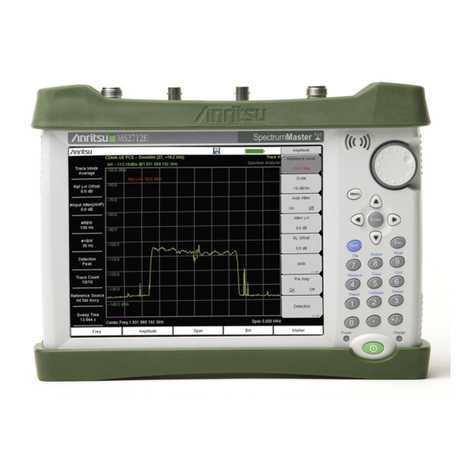
Anritsu
Anritsu Spectrum Master MS2712E user guide
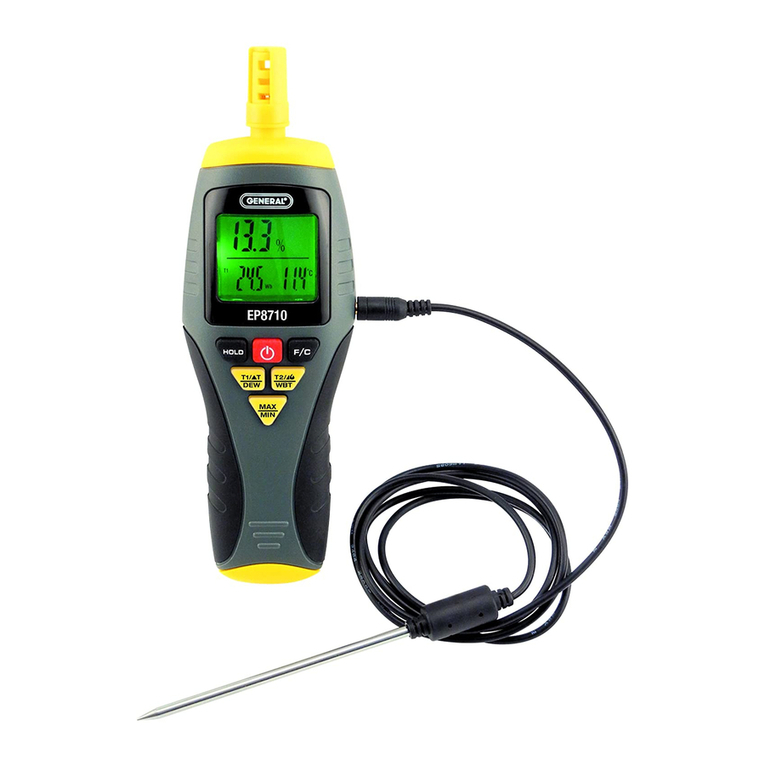
General
General EP8710 user manual
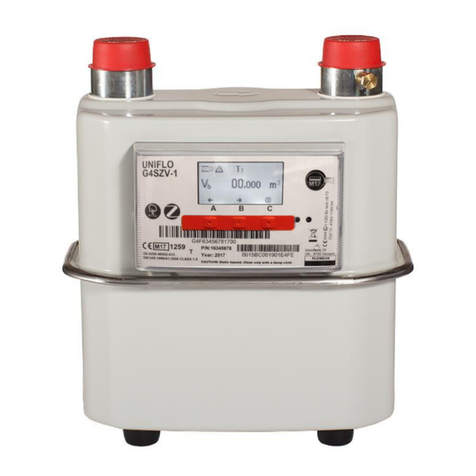
ScottishPower
ScottishPower Aclara SMETS2 Guide

Büttner Elektronik
Büttner Elektronik Dometic MT iQ Basic Pro Installation and operating manual

Ambient Weather
Ambient Weather BA30806 user manual
